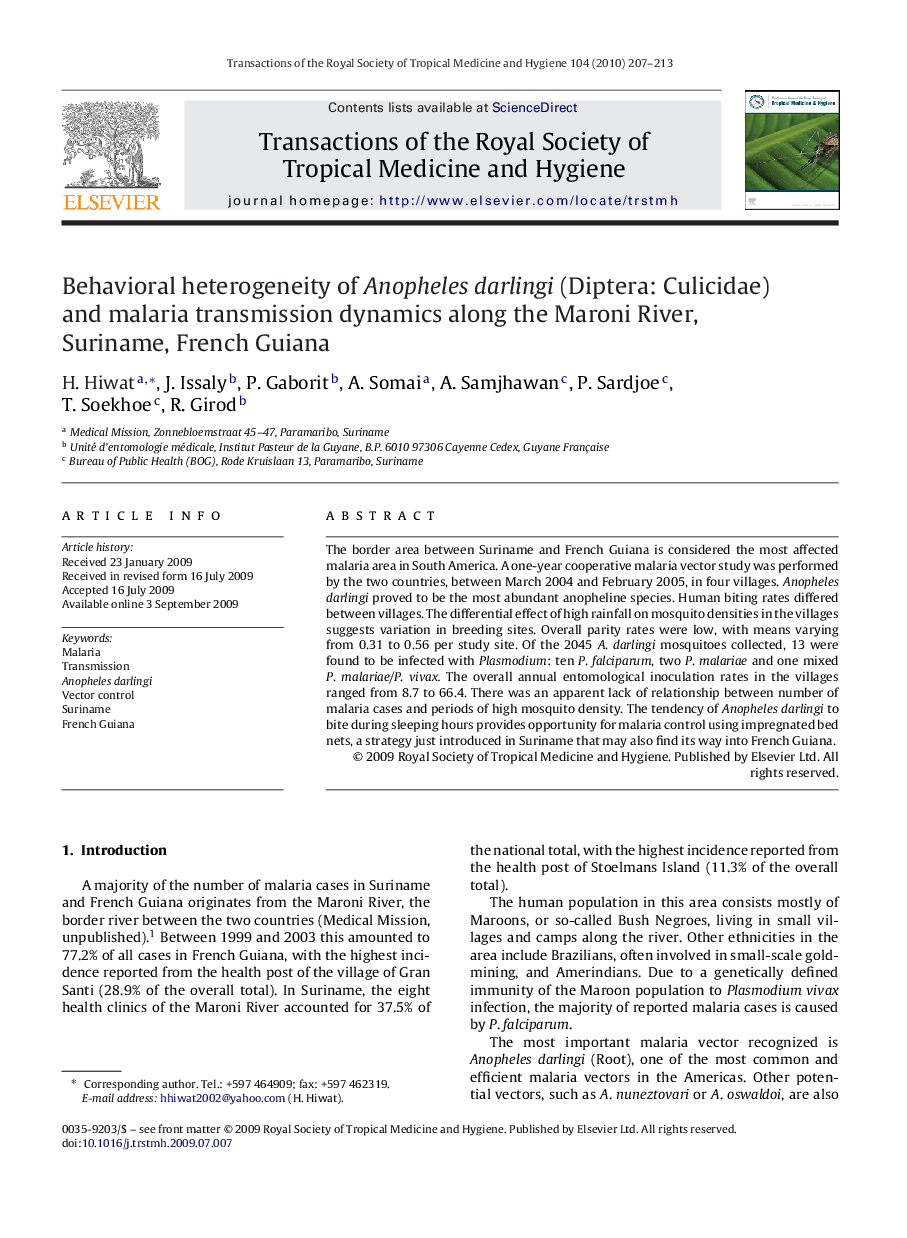| Article ID | Journal | Published Year | Pages | File Type |
|---|---|---|---|---|
| 3420495 | Transactions of the Royal Society of Tropical Medicine and Hygiene | 2010 | 7 Pages |
Abstract
The border area between Suriname and French Guiana is considered the most affected malaria area in South America. A one-year cooperative malaria vector study was performed by the two countries, between March 2004 and February 2005, in four villages. Anopheles darlingi proved to be the most abundant anopheline species. Human biting rates differed between villages. The differential effect of high rainfall on mosquito densities in the villages suggests variation in breeding sites. Overall parity rates were low, with means varying from 0.31 to 0.56 per study site. Of the 2045 A. darlingi mosquitoes collected, 13 were found to be infected with Plasmodium: ten P. falciparum, two P. malariae and one mixed P. malariae/P. vivax. The overall annual entomological inoculation rates in the villages ranged from 8.7 to 66.4. There was an apparent lack of relationship between number of malaria cases and periods of high mosquito density. The tendency of Anopheles darlingi to bite during sleeping hours provides opportunity for malaria control using impregnated bed nets, a strategy just introduced in Suriname that may also find its way into French Guiana.
Related Topics
Life Sciences
Immunology and Microbiology
Applied Microbiology and Biotechnology
Authors
H. Hiwat, J. Issaly, P. Gaborit, A. Somai, A. Samjhawan, P. Sardjoe, T. Soekhoe, R. Girod,
